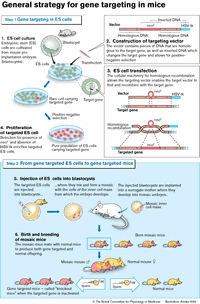Possible antitumor substances in red wine are formed during ageing in oak barrels
polyphenols not only give red wine its characteristic dry flavor, they are also the basis for the recent good reputation of this stimulant as a true health drink. They are believed to prevent heart disease and atherosclerosis. French researchers working with Stéphane Quideau have now discovered more examples of polyphenols in red wine, and these could have anticancer activity.
Polyphenols are a large class of substances that act as tannins and pigments in many fruits and vegetables. "A number of these substances have already made their way into medicine, but the potential has not been exhausted by a long shot," says Quideau. He and his team have now found another interesting compound in red wine. Acutissimin A is a flavano ellagitannin, meaning that it has both flavonoid and tannin components. The substance was first discovered in the oak species Quercus acutissima, from which it takes its name. What makes acutissimin A so attractive is its inhibitory effect on DNA topoisomerase II, because this enzyme is a target in cancer treatment. Acutissimin A inhibits this enzyme 250 times more strongly than the clinically used antitumor agent Etoposid.
The French team was able to produce acutissimin A semisynthetically in the laboratory by binding together the flavanoid catechin and the tannin vescalagin. If an isomer of catechin, epicatechin, is used, a closely related but previously unknown compound, which the researchers called "epiacutissimin", is formed. The team was later also able to detect this substance in red wine extracts.
How do acutissimin and epiacutissimin get into red wine? It's the ageing in oak barrels! Says Quideau: "The grape juice contains the flavonoid precursors catechin and epicatechin. During storage, the alcoholic liquid then extracts a whole bouquet of substances out of the oak barrels, including the necessary co-reactant, vescalagin." Quideau and his colleagues won't go so far as to call wine a cancer preventative. But one can hardly wait to see what surprises red wine has in store for us next. The probability is high that these precious drops contain more tannin hybrid molecules with interesting pharmacological activity.
Other news from the department science

Get the chemical industry in your inbox
By submitting this form you agree that LUMITOS AG will send you the newsletter(s) selected above by email. Your data will not be passed on to third parties. Your data will be stored and processed in accordance with our data protection regulations. LUMITOS may contact you by email for the purpose of advertising or market and opinion surveys. You can revoke your consent at any time without giving reasons to LUMITOS AG, Ernst-Augustin-Str. 2, 12489 Berlin, Germany or by e-mail at revoke@lumitos.com with effect for the future. In addition, each email contains a link to unsubscribe from the corresponding newsletter.
Most read news
More news from our other portals
Last viewed contents
NIST calculations may improve temperature measures for microfluidics
Jenkem
Calcium_in_biology
Regulator_of_G_protein_signalling
Category:Cardiac_hormones
Huntsman to Increase MDI and MDI-Based Systems Prices in Europe
Erbin_(protein)




























































